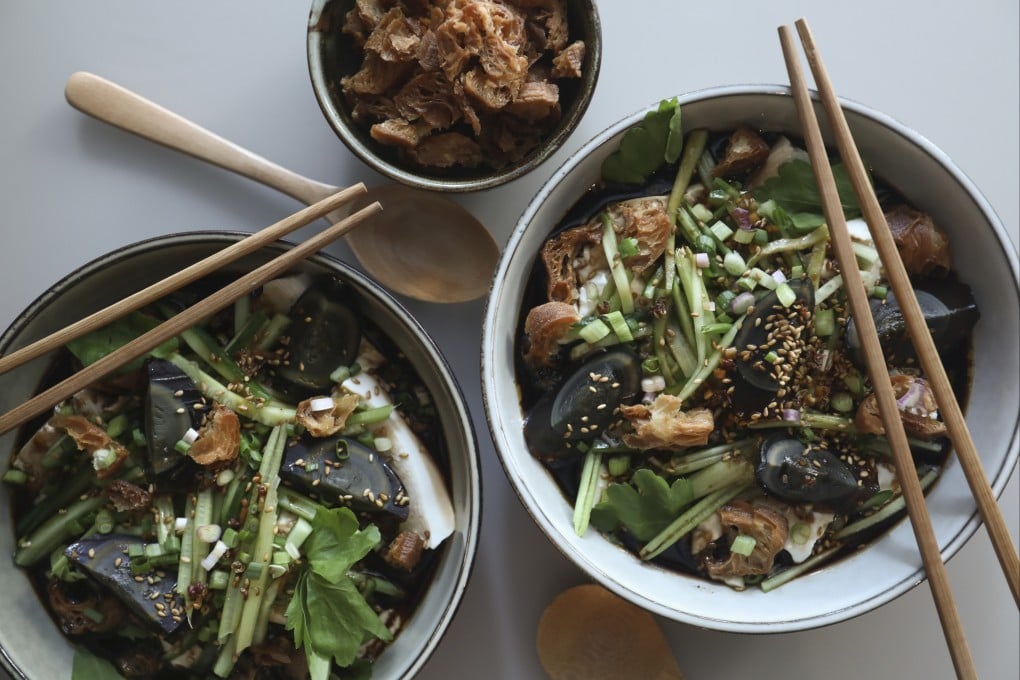How to make Sichuan-style soft bean curd with century egg - cooling and delicious
- Full of flavours and textures, this dish marries century egg with bean curd, crunchy cucumber, celery and Chinese savoury doughnuts
- Sichuan peppercorns add a numbing sensation to the sauce, which can keep for weeks

This vegetarian dish of soft bean curd with century egg and Sichuan spicy sauce is a light and cooling main course. I love it because it has a lot of flavours and textures: the soft bean curd, tender but resilient century egg, crisp Chinese celery, crunchy fried yau ja gwai (Chinese doughnuts or crullers) and cooling cucumber drenched in spicy sauce with numbing Sichuan peppercorns.
Sichuan-style soft bean curd with century egg, Chinese celery, cucumber and yau ja gwai
Century egg, or pei dan in Cantonese, is also known as 1,000-year-old egg and preserved egg, but should not to be mistaken for salted egg, which is another type of Chinese preserved egg. In the West, people not familiar with pei dan look on it with horror, and it has been featured in television programmes such as Fear Factor and Bizarre Foods, which I never could watch because of the judgmental titles.
That revulsion is probably because the egg is dark instead of white and orange or yellow: the egg white ranges from light amber to dark grey, and the yolk often has a greenish tinge. But a century egg can be a thing of beauty – some of the best have a pattern of snowflakes or pine on the translucent white. The eggs are sometimes sold with a light clay and rice husk coating that is easily scraped off with a butter knife.

Chinese celery is long and slender, with a softer crispness than the Western variety, and it’s a lot more fragrant. It is worth seeking out, but if you can’t find it, use two stalks of Western celery, sliced lengthwise into thinner pieces, before using it in the recipe.
Yau ja gwai, also called you tiao, come in pairs and are savoury, not sweet. They are often used as a topping for congee or savoury soybean milk, and are also good as the base for shrimp toast.
For this dish, the yau ja gwai are cut into pieces then fried until crunchy.
Any leftover sauce will keep in the fridge for several weeks and is delicious with cold noodles – I use thin egg noodles or Korean sweet potato noodles – and julienned cucumber, shredded cooked chicken and crushed peanuts.

